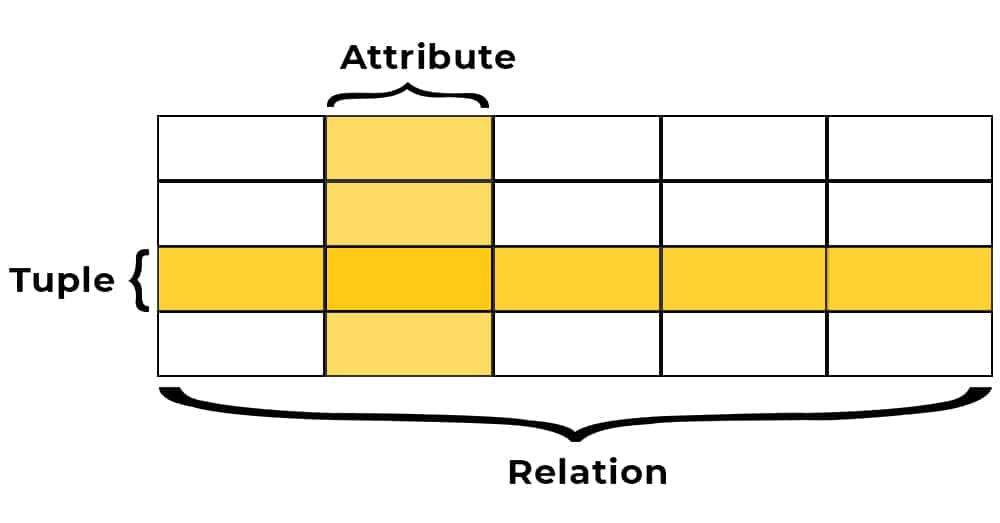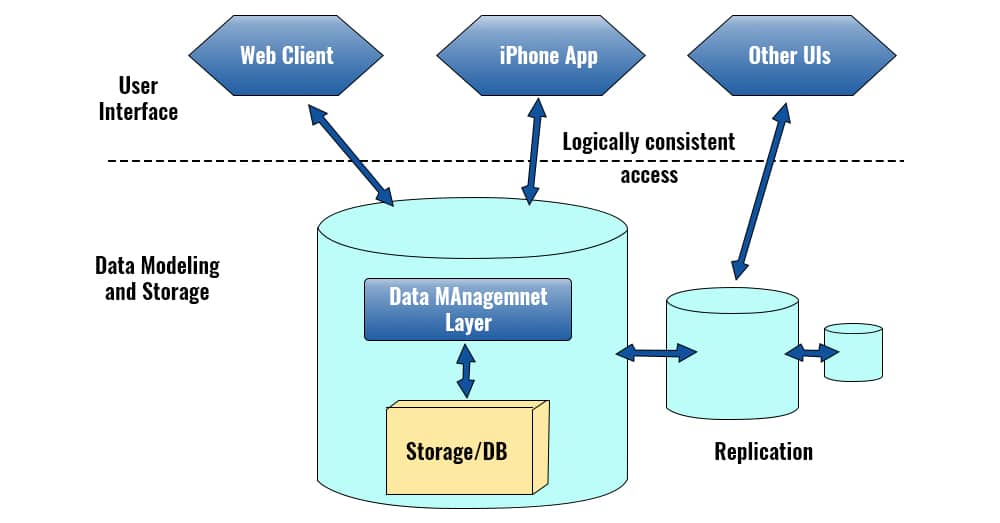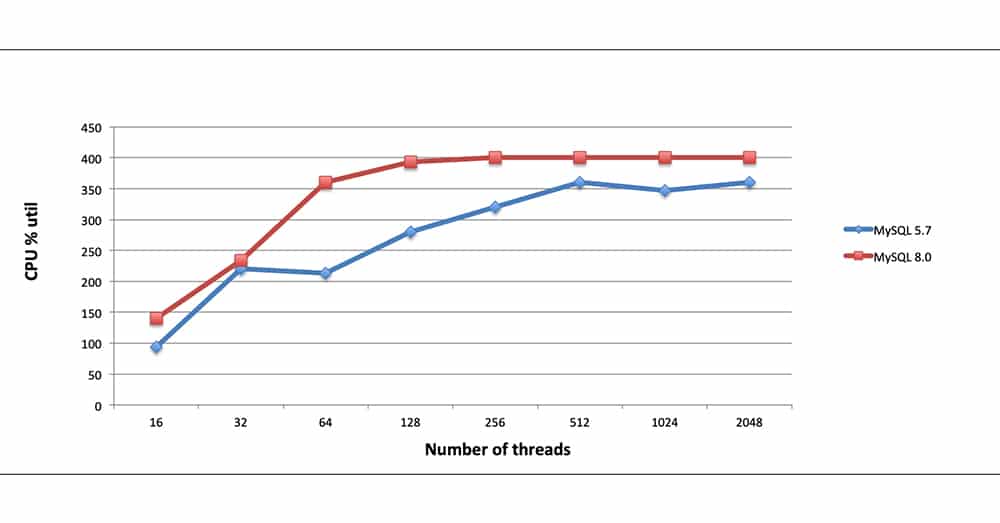Have you ever imagined what life would have been without a system?
How would your mail reach you if you had no registered address? Or how would your friends call you if all the contact information of people were jumbled up?
It would have been such a mess.
These are just some daily life examples that prove we can not function normally if we don’t organize our information into a structured form.
Organizing information is even more important in an entrepreneur’s life; everything that the future holds for them depends on how organized they are and how they’ve maintained it through.
Benjamin Franklin rightly said:
“For every minute spent organizing, an hour is earned.”
And each minute is very crucial in an entrepreneur’s life, as all of us have heard the saying that ‘time is money.’
When a product owner has to take forward her/his android app development in due time, making no mistakes, s/he needs to gather all the relevant data. Data that s/he can access at any time, be it employee records, salary details, transaction, or anything else.
And data management requires a product owner to collect all that data into a structured form. Which can be only done through databases.
In this article, we will cover:
- What is a database and its types?
- Mistakes that can create a wrong database
- 3 ways to ensure your database is done right
- Questions that you should ask your developer to ensure a good database.
So sit back and relax! While we take you through each critical aspect that will ensure you create an on-point database.
So let’s commence.
What is a Database?
A database is a compilation of information organized in a way that it can be accessed, updated, and managed whenever needed. A computer database contains the accumulation of files or data records, which contains information regarding sales transactions or maybe interactions with specific users.
Databases are essential for many reasons like:
- Since the database has all sorts of built-in constraints, it is pretty accurate in almost all cases.
- A good database ensures your data is safe and secure.
- Databases make sure that the data is consistent.
- Since all information is in one place, it becomes easy to research data.
Databases have evolved a lot since their initiation in the 1960s, they began with the hierarchical and tech work databases, moved to object-oriented databases in the 1980s and now most companies use SQL, NoSQL databases and cloud databases.
As an android app development company, we can tell you that databases can be arranged according to different content types, which could be numeric, full text, images, or bibliographic.
There are various kinds of databases from the relational database, cloud database, distributed database, graph database to the NoSQL database.
It’s important for a product owner to start with the basics.
So, let’s learn a bit about the types of Databases:
It is a tabular form of database where the data is defined in a way that it can be accessed and reorganized in several ways. It is made up of a set of tables that holds information that fits into predefined categories.
Each table has a minimum one data category in a column, and each row has details to that data that is defined in the column.

It is a database system where portions of the database are stored in various physical locations. Here the processing is scattered among multiple points in the network.
A distributed database can be homogeneous or heterogeneous.
In a homogeneous distributed database, all the physical locations have the same underlying hardware and run the same database application and operating system.
While in heterogeneous distribution databases, the operating system and database application are different at each location.

Cloud database refers to a database that has been specially built for a virtualized environment.
Cloud databases are most popular since they provide the users to pay for the usage capacity on a per-use basis; they are highly available and provide scalability on demand.

They are especially useful for a vast set of distributed data. NoSQL databases are used where the relational databases fail to perform, which is majorly for a big data performance issue.
They are most efficient when an organization has to analyze a lot of unstructured data or to analyze data that is stored across various virtual servers in the cloud.

It is a type of NoSQL database that stores, maps, and query relationships into a graphical form.
It is a compilation of nodes and edges. Each node symbolizes a unit, and each edge symbolizes the connection between the nodes.

Obviously, managing the data correctly and systematically is very important for any organization. No product owner would ever want to waste his time on silly problems like jumbled up data.
Hence, it is crucial to maintain the data in a way that is easily understandable and could be relied upon.
From above information you can choose the database that best suits your products’ needs and save up all your data there.
However,
If the data is not placed attentively, it could be a disaster for the management.
Let’s take a look at some common mistakes your developer can make that may result in the database becoming a total blunder:
- Inferior Planning
When you are cooking a new dish, do you follow the recipe or just put everything together? I hope your answer is following the recipe step by step.
Because if you put everything together, it would sure be a disaster.
Databasing is somewhat similar. The better you plan, the better will be the quality of your design output.
So as a product owner, you must ensure that your developer is following each required step to build up the right database for you.
You must know that a good database is the result of careful planning and not just a cluster of ideas.
Your developer must build up a database that is well thought because in case it’s not, it can lead to structural problems that may be too expensive for you to unroll once the database is rolled up.
I am not saying that you can foresee every problem that your database may face, but planning would surely reduce future risks.
- Neglecting the purpose of data
You can use a database for a wide range of purposes. It may be a small database or humongous database handling vast volumes of data, it all depends on your needs.
If you own a small business and you don’t have massive data to maintain you can build up a small database. But if you have a lot of data to maintain you would definitely need to build a huge database.
You must be clear with the purpose of designing the database so that your developer can prepare a database that is aligned with your goals.
It must be noted that a database where data is recorded and stored automatically would always easily overpower the database that requires an individual to update the data manually.
You must always settle for a data design that ensures security, usability, and efficiency.
If your developer ignores the purpose of data, s/he may still be able to design a database, but it will not be efficient at all.
- Unnecessary records
It is a nightmare for any business owner as well as their developers.
It may not seem like a big problem to you initially when there is maybe just a dozen of redundant data, but in large databases where the data is in millions.
It is a full-on disaster.
Unnecessary information increases the database size and thus reduces its efficiency, which in turn increases the risk of your data going corrupt.
The product owner must understand that there may be times when redundancy is necessary, but even in such cases, your developer must document the data to ensure removal in the future when the reason is no more valid.
- Poor Documentation
To a product owner, documentation may feel like an insignificant aspect of the development process. I mean, we know the process, what’s the need of documentation, we remember the steps.
Well, good for you.
But you must know that many excellent databases have come to a halt due to poor documentation, and it can affect your business drastically.
Jumbled data equals total mismanagement, you can imagine the rest.
Poor documentation can become a significant hurdle in troubleshooting, structural improvements, continuation, and upgrade.
A product owner must always remember that her/his database will not always be supported by just one developer, as s/he moves on in the business, developers would change. Hence documentation is a must for the sake of your product.
A well documented database can be handled by another developer in the future.
Poor documentation would even make it harder for your current developer to rebuild the same project in the future.
- Insufficient Testing
You may do everything in your power to ensure that the database is done right.
However, if you don’t subject the database to meticulous testing, it would be like throwing all your and your teams’ efforts into vain.
Unfortunately, the testing phase is often ignored when the project is running late. And that is the most foolish thing to do because the faults or bugs that could have easily been tested in the testing phase would be discovered in the later stage of the project.
Just think which user would use a product that has glitches?
A database with bugs will never be feasible for your users, and even if you manage to fix those bugs, it would still hamper your market reputation.
If in-depth and rigorous testing is done before the launch, it could save you a lot of money in the future and would definitely reduce the risk of failure.
It is essential to know the mistakes so you can learn from them.
Keep in mind the examples of others and try not to be an example for others (in a negative way, of course).
To save yourself from creating a wrong database, I have come up with some suggestions you can keep in mind while you design your database:
Let’s start with the basics
- You need to learn a bit about Data Normalization:
Data normalization is a technique that organizes the database design in a manner that reduces the repetition and dependency of the data.
Normalization divides larger tables into smaller tables and links them up using relationships.
It eliminates useless data and makes sure data is sorted logically.
The theory of normalization was proposed with the First normal form, then second, then third, and so on.
These normal forms are all progressive, meaning, to qualify to the third normal form, a table must satisfy the rules of the second normal form, and to be eligible as second normal form a table must fulfill the standards of first normal form.

Some things to remember:
Database normalization uses keys that are used to identify a record in a table. It could be a single column or combination of various columns.
Primary Key: Holds a unique value which should be rarely changed.
Composite key: It is a primary key that is used to identify multiple columns uniquely.
Rules for 1st NF:
- Each table cell must have a single value.
- Records must be unique.
Rules for 2nd NF:
- Must have 1NF
- Must have a single-column primary key
Rules for 3rd NF:
- Must be in 2 NF
- Must have no transitive functional dependencies.
There are some easy ways a product owner can check if the developer has built the database right or not, or can find issues to confront with the developer.
Some ways you can do that are:
- Chrome Waterfall
No developer would like to accept that s/he made a mistake.
So, if you don’t know, you might never know.
But you don’t have to worry there’s an easy trick through which you can check the speed of each element in your page.
Just follow four simple steps:
- Right click on your web page.
- Click on inspect elements
- Select network
- View your page response time on side window that says ‘waterfall’

You would be able to see how much time your query takes to respond since the time you fired it, on the window (as above).
Check the time your elements are taking and ask your developer to fix the one taking the longest time to respond.
Through this you can also figure out which element is adding up to increase in your page response time.
- Slow Log Query
It is very important for a product owner to know which element in their database is taking the longest or adding up to their page loading time.
If you are able to figure that out, you will be able to ask your developer to work on the concerned areas and enhance your websites’ performance.
So, another way through which you can check if your database is done right is through Slow Log Query.
Ask your developer to send you the file name and link you need to check, and search it on the built in tools of MySQL.
You can check your query through,
FLUSH SESSION STATUS; <QUERY>; SHOW SESSION STATUS.
This will show the status of counters that are augmented when you run the query.
It will provide you with a great view of the internal MySQL operations that are caused by the query.
With the data like the time your request took to respond, from the start time of your request to the end time. It’ll give you all the information
The Slow Query log would look something like this:

- Ask for MySQL resources
Ask your developer to provide you with the MySQL resource performance of the time frame you want.
Suppose you need to see how your website has performed in the last four hours, so you can simply ask your developer for the MySQL resource performance of the last four hours.
This will provide you with the data like the response time of your page elements, the data of user engagement in the page, etc.
The data will look somewhat like this:

Analysing this data you can assess the elements that may be faulty, or detect other areas of concern.
Once you find the obstacle, you can work with your developer to resolve it.
With all that in mind, you must now get on with your team and build up a database that is well-designed, well-structured, and well-documented.
If you analyze each step correctly, there is nothing that you can’t defy.







